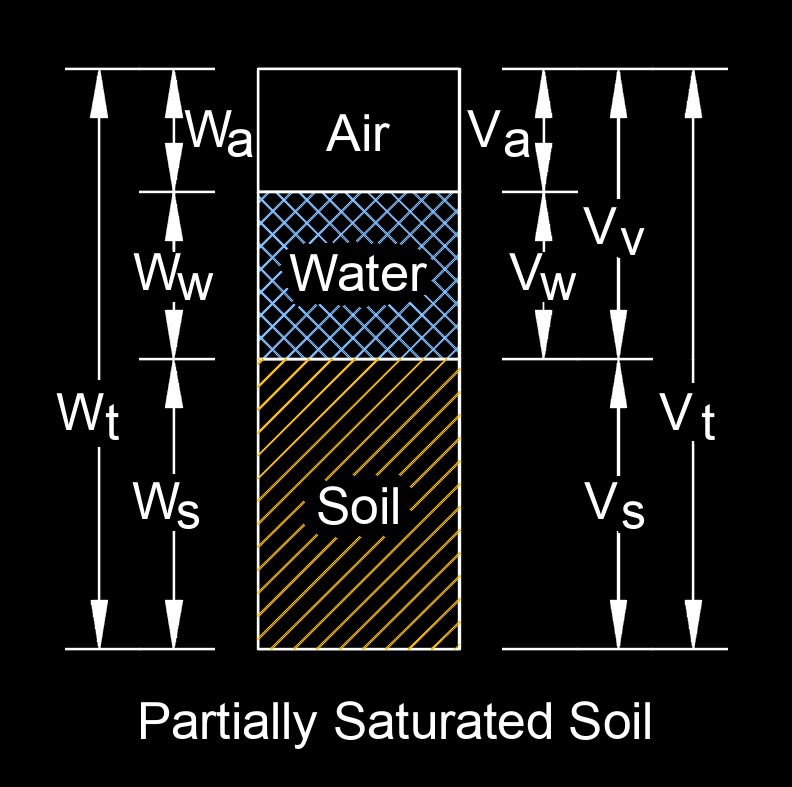Degree of Saturation
Degree of Saturation formula |
||
|
\( S \;=\; \dfrac{ V_w }{ V_v }\) (Degree of Saturation) \( V_w \;=\; S \cdot V_v \) \( V_v \;=\; \dfrac{ V_w }{ S }\) |
||
| Symbol | English | Metric |
| \( S \) = Degree of Saturation (expressed as %) | \(dimensionless\) | \(dimensionless\) |
| \( V_w \) = Volume of Water | \(ft^3\) | \(m^3\) |
| \( V_v \) = Volume of Voids (Air and Water) | \(ft^3\) | \(m^3\) |
 Degree of saturation, abbreviated as \(S\), a dimensionless number, is a measure used in geotechnical and soil science to express the amount of pore space in a soil or rock that is filled with water, relative to its total pore space capacity. It represents the ratio of the volume of water in a soil to the total volume of voids or pores within that soil.
Degree of saturation, abbreviated as \(S\), a dimensionless number, is a measure used in geotechnical and soil science to express the amount of pore space in a soil or rock that is filled with water, relative to its total pore space capacity. It represents the ratio of the volume of water in a soil to the total volume of voids or pores within that soil.
The degree of saturation ranges from 0% to 100%. A value of 0% indicates that the soil is completely dry and contains no water, while a value of 100% indicates that the soil is fully saturated, with all available pore space filled with water.
It's important to note that the degree of saturation is influenced by factors such as the type of soil, its porosity, and the presence of other fluids or gases. In some cases, soils can have a degree of saturation greater than 100%, indicating the presence of excess water in the soil beyond its total pore space capacity. This occurs when water is held under tension or when other factors, such as compaction, limit the soil's ability to release water.
The degree of saturation is a crucial parameter in geotechnical engineering, as it affects the mechanical behavior and strength of soils, the flow of groundwater, and the stability of slopes and foundations. Understanding the degree of saturation helps engineers and scientists assess the behavior and properties of soils in various engineering and environmental applications.

